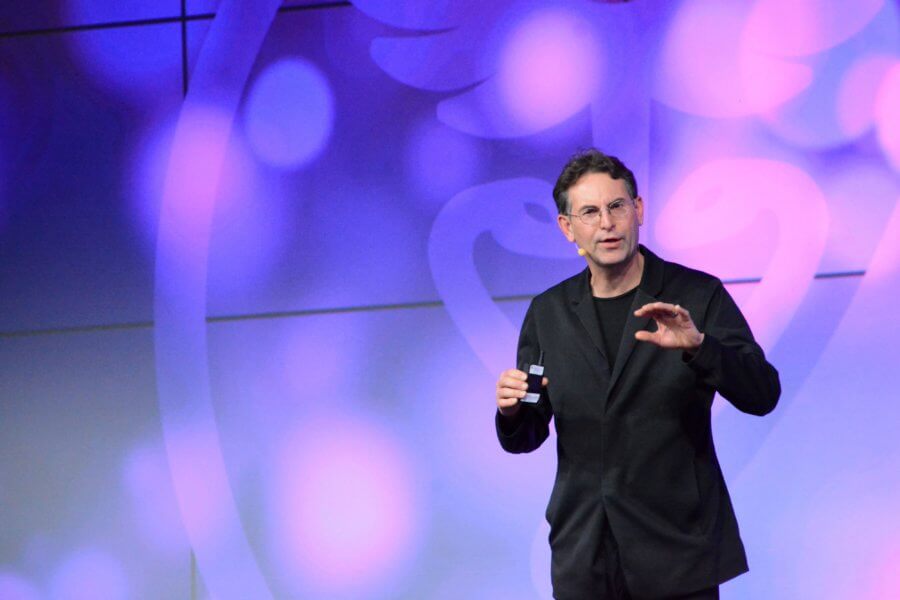One of the most accomplished and respected digital health experts in the world has advised the ADHA the MHR project and its approach is wrong
One of the most respected and experienced digital health experts in the world last week called on the Australian Digital Health Agency (ADHA) to stop the current trajectory of the My Health Record (MHR) project immediately and refocus and prioritise investment where it will have real and near-term benefit for the Australian health system.
Professor John Halamka, is Chief Information Officer of Beth Israel Deaconess Medical Center in Boston, US, Chief Information Officer at Harvard Medical School and Chairman of the US Healthcare Information Technology Standards Panel (HITSP).
He has worked closely with both the Bush and Obama healthcare administrations to introduce and adapt the revolutionary and at times controversial “meaningful uses” legislation in that country.
Recently he has been contracted by the Gates Foundation to advise on digital connectivity in the effort to bring HIV under control in Africa, the Norwegian government in their efforts to swing their economy to be focused on healthcare innovation, and the Chinese government, in an ambitious project to digitise the medical data of the Chinese population and create the most powerful medical AI database in the world.
Visiting Australia briefly last week to keynote at the digital health transformation summit, Wild Health, Professor Halamka was asked by local digital health experts if he would talk to the AHDA about where he thought Australia was in digital health in the context of the rest of the world. According to sources, the ADHA had asked Professor Halamka not to sugar coat anything in his assessment.
And he didn’t.
While acknowledging the agency for how much it has achieved in terms of getting legislation in place and moving the needle on the digital health issue, he told senior leaders in the ADHA that the MHR project as it stood today was a waste of time and money for Australia.
He told attendees that without an ability to share structured data in a meaningful way, via a standard such as FHIR (Fast Health Interoperability Resources), that most of the work done to date and moving forward would be of no use. If you aren’t familiar with FHIR CLICK HERE for a quick overview
He said that it should be a major focus for the agency to look carefully out how distributed data sharing technologies like FHIR and blockchain are going to open up healthcare to patients, particularly now that Google and Apple have adopted FHIR has their standard for every application they are developing in healthcare.
But he didn’t stop there. Professor Halamka told the meeting that he was surprised that the Australian government was attempting to build and run such a big and centralized IT project.
He told them that he had not seen any government anywhere in the world succeed with such a huge centralized project, and that in any case, the technology for healthcare data sharing was moving rapidly towards the ability to share data via distributed databases, using the web and VPNs.

He told the Wild Health Summit that he felt the ADHA and the Australian government should probably stop the MHR project in its current form immediately and quickly reassess how they can leverage what they’ve done so far, and refocus their efforts to where , in his experience, government based digital health bodies can help.
He said that governments should concentrate on enabling innovators not on building infrastructure themselves. He said this was often best done by them outlining clear policy and standards for industry to be working off, and that in the case of digital health, the standard that they should be pursuing, because the rest of the world is, including the major digital platform providers such as Google and Apple, is FHIR.
He also said it was government’s job to run cover on organisation’s that were prepared to take risk.
“Governments need to accept and work with the idea that in digital health there is no such thing as zero risk,” he told the audience.
Professor Halamka pointed out that the US had made quite a few mistakes in their implementation of “meaningful use” of EMRs in digital health, mainly by being over prescriptive about the use of technology, but that they’d now realised they needed to break their huge aspirations for digital health into shorter term and clearly acheiveable projects. For the US government they’ve settled on just four goals in the short term, two of which are:
- Reduce the opioid crisis through better connected prescribing
- Make specialist referrals from GPs seamlessly connected, secure and digital
Professor Halamka said Australia might do well by chunking down it’s grander visions and goals into smaller achievable projects like these, and it was certainly not to0 late to rethink their approach.
He said we all needed to be bolder, smarter and acknowledge much faster when we are failing.
“Create a sense of urgency”, he told delegates.
“And be brave when you’re failing. Kill stuff. If you are going to go bigger, base those projects on evidence of success in the smaller projects. AndsSuccess is best measured by adoption”
According to those at the ADHA meeting, the ADHA did not disagree with anything Professor Halamka was saying.
Which begs the question: why does the MHR project continue largely unabated?


